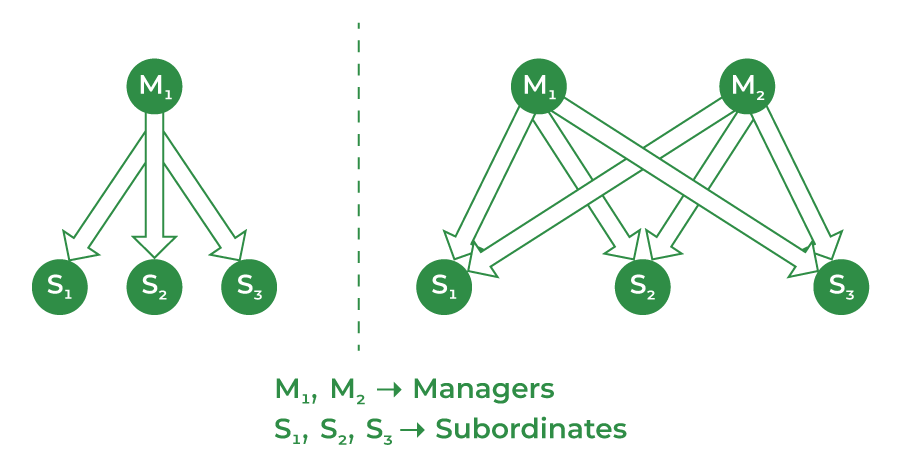Difference between Unity of Command and Unity of Direction
Last Updated :
11 Jan, 2024
Unity of Command and Unity of Direction are two of the essential principles of management from among the 14 principles identified by Henry Fayol.

According to the principle of Unity of Command, each subordinate should receive orders and be accountable to only one superior. If an employee gets orders from two superiors at the same time, then it would be very difficult for him to achieve the goals. In a formal organization, every employee should get an order from one boss and should be responsible to one boss only. If he receives orders from two or more superiors, then the principle of command is violated. This will also create confusion and responsibilities cannot be fixed.
For example, there is a salesperson who is asked to clinch a deal with a buyer and he is allowed to give a 12% discount by the marketing manager. But the finance department tells him not to offer more than a 6% discount. In this case, there is no unity of command, which will lead to confusion and delay.

Unity of Direction implies that there should be one head and one person for proof of activities having the same objectives. According to this principle, all the activities should be carried under the direction of one head, and there should be effective coordination in all the activities. This principle ensures unity of action and avoids unnecessary duplication of work.
For example, if an organization has four departments for different activities, then each department must be directed by one superior, and its employees should give their whole efforts to achieving the plan of the organization. Each division should
have its supervisor, plans, and execution resources. There should not be an unnecessary duplication of efforts and a waste of resources.

Difference between Unity of Command and Unity of Direction
| Meaning |
Unity of Command implies that each subordinate should receive orders and be accountable to only the superior. |
Unity of Direction implies that there should be one head and one person for proof of activities having the same objectives. |
| Aim |
Its aim is to avoid confusion and fix responsibility. |
It aims to direct efforts of all employees to achieve organizational goals. |
| Implications |
It is related to the functioning of personnel. |
It is related to the functioning of the entire organization. |
| Significance |
It improves efficiency and brings harmony and discipline. |
It ensures unity of action and coordination of efforts. |
| Consequence of Violation |
Its absence or violation will create confusion as to whose order a subordinate has to comply with. |
Its absence or violation will lead to unnecessary duplication of efforts and wastage of resources. |
Like Article
Suggest improvement
Share your thoughts in the comments
Please Login to comment...